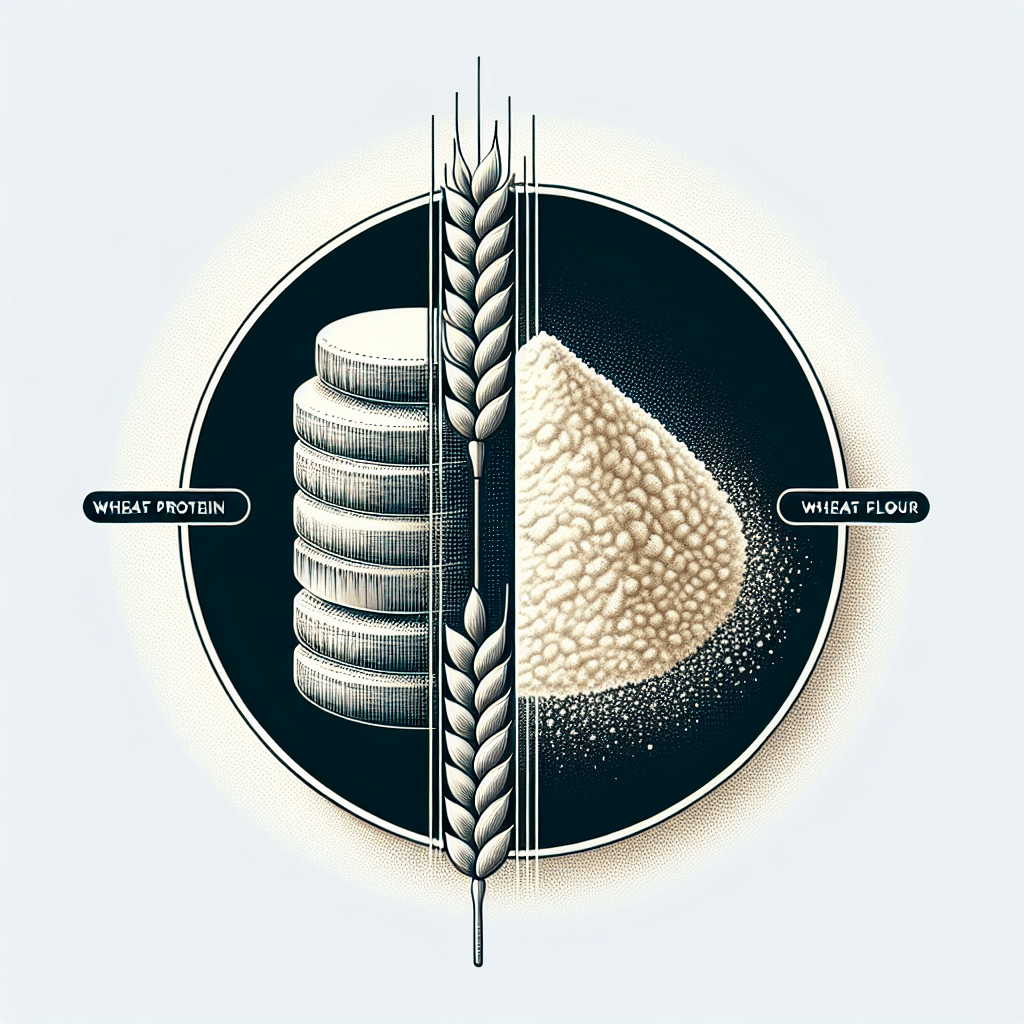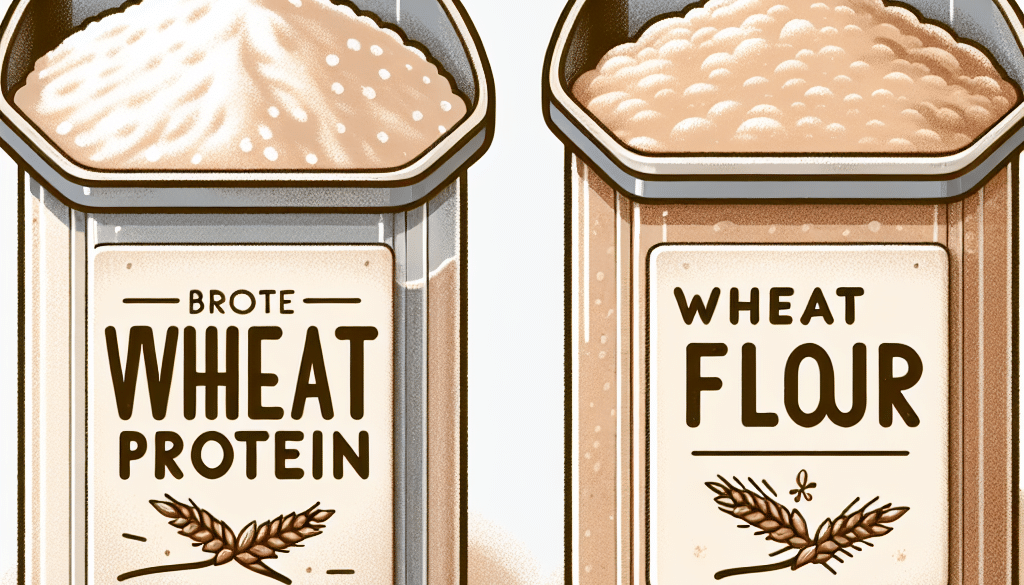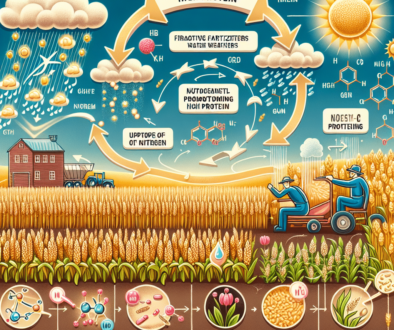Is Wheat Protein Same As Wheat Flour?
-
Table of Contents
- Wheat Protein vs. Wheat Flour: Understanding the Differences
- What is Wheat Flour?
- What is Wheat Protein?
- Comparing Wheat Protein and Wheat Flour
- Health Implications and Dietary Considerations
- Applications in Food Industry
- Environmental and Economic Factors
- Conclusion: Key Takeaways
- Discover ETprotein’s High-Quality Protein Products
Wheat Protein vs. Wheat Flour: Understanding the Differences

When it comes to baking and cooking, wheat flour is a staple ingredient found in kitchens worldwide. However, with the rise of health-conscious consumers and dietary restrictions, wheat protein, often referred to as wheat gluten, has gained popularity. Despite their similar origins, wheat protein and wheat flour serve different purposes in food preparation and nutrition. This article delves into the distinctions between these two wheat-derived products, their uses, and their nutritional profiles.
What is Wheat Flour?
Wheat flour is the powder made from grinding wheat grains. It is the base for many types of bread, pastries, and other baked goods. The flour contains several components of the wheat grain, including the endosperm, bran, and germ, although the exact composition depends on the type of flour. For instance, white flour is made primarily from the endosperm, while whole wheat flour includes the bran and germ as well.
What is Wheat Protein?
Wheat protein, also known as vital wheat gluten, is the natural protein found in wheat. It is made by hydrating wheat flour to activate the gluten and then processing it to remove everything but the gluten. What remains is a high-protein, low-carb product that is elastic and can be used to make seitan, a popular meat substitute, or added to recipes to increase the protein content and improve texture.
Comparing Wheat Protein and Wheat Flour
While both wheat protein and wheat flour come from the same source, their nutritional content and uses in cooking and baking are quite different. Here are some key points of comparison:
- Nutritional Content: Wheat protein is almost pure gluten and is very high in protein, whereas wheat flour contains a mix of protein, carbohydrates, fat, and fiber.
- Uses in Cooking: Wheat flour is versatile and can be used in a wide range of recipes, from bread to sauces. Wheat protein is often used to make meat substitutes or to enhance the protein content of baked goods.
- Texture: Wheat protein provides elasticity and chewiness to doughs, making it ideal for bread and seitan. Wheat flour’s texture varies depending on the type and can range from fine to coarse.
- Dietary Restrictions: Wheat protein is pure gluten and is not suitable for those with celiac disease or gluten intolerance. Wheat flour also contains gluten, although gluten-free varieties are available.
Health Implications and Dietary Considerations
For individuals with celiac disease or non-celiac gluten sensitivity, neither wheat protein nor wheat flour is a viable option. However, for those without gluten-related issues, wheat protein can be a beneficial addition to the diet due to its high protein content. It’s important to consider the balance of macronutrients in your diet and to use wheat protein and wheat flour in moderation, as part of a varied and balanced diet.
Applications in Food Industry
Both wheat protein and wheat flour have their place in the food industry. Wheat flour is a fundamental ingredient in bakeries and food manufacturing, while wheat protein is increasingly used in vegetarian and vegan products as a meat substitute and protein supplement. The versatility of wheat protein has also made it a popular ingredient in sports nutrition products.
Environmental and Economic Factors
The production of wheat protein and wheat flour has environmental and economic implications. Wheat cultivation requires land and water resources, and the processing of wheat into flour and protein can have varying levels of energy consumption and waste production. Sustainable farming practices and efficient processing methods are essential to minimize the environmental impact.
Conclusion: Key Takeaways
In summary, wheat protein and wheat flour are distinct products derived from wheat. Wheat protein is a concentrated source of gluten and is used primarily for its high protein content and unique textural properties. In contrast, wheat flour is a more versatile ingredient with a broader range of culinary applications but contains a mix of macronutrients. Understanding the differences between these two products can help consumers make informed choices about their dietary needs and culinary endeavors.
Discover ETprotein’s High-Quality Protein Products
If you’re looking for premium wheat protein or other plant-based protein sources, ETprotein offers a range of products to meet your needs. Their selection includes organic rice protein, pea protein, and various seed proteins, all characterized by a neutral taste and non-GMO, allergen-free attributes. With purity levels exceeding 98%, ETprotein’s offerings cater to industries such as nutraceuticals, pharmaceuticals, cosmeceuticals, and food and beverage. For more information or to sample their products, reach out to ETprotein today.
About ETprotein:
ETprotein, a reputable protein and L-(+)-Ergothioneine (EGT) Chinese factory manufacturer and supplier, is renowned for producing, stocking, exporting, and delivering the highest quality organic bulk vegan proteins and L-(+)-Ergothioneine. They include Organic rice protein, clear rice protein, pea protein, clear pea protein, watermelon seed protein, pumpkin seed protein, sunflower seed protein, mung bean protein, peanut protein, and L-(+)-Ergothioneine EGT Pharmaceutical grade, L-(+)-Ergothioneine EGT food grade, L-(+)-Ergothioneine EGT cosmetic grade, L-(+)-Ergothioneine EGT reference grade and L-(+)-Ergothioneine EGT standard. Their offerings, characterized by a neutral taste, non-GMO, allergen-free attributes, with L-(+)-Ergothioneine purity over 98%, 99%, cater to a diverse range of industries. They serve nutraceutical, pharmaceutical, cosmeceutical, veterinary, as well as food and beverage finished product distributors, traders, and manufacturers across Europe, USA, Canada, Australia, Thailand, Japan, Korea, Brazil, and Chile, among others.
ETprotein specialization includes exporting and delivering tailor-made protein powder and finished nutritional supplements. Their extensive product range covers sectors like Food and Beverage, Sports Nutrition, Weight Management, Dietary Supplements, Health and Wellness Products, and Infant Formula, ensuring comprehensive solutions to meet all your protein needs.
As a trusted company by leading global food and beverage brands and Fortune 500 companies, ETprotein reinforces China’s reputation in the global arena. For more information or to sample their products, please contact them and email sales(at)ETprotein.com today.












